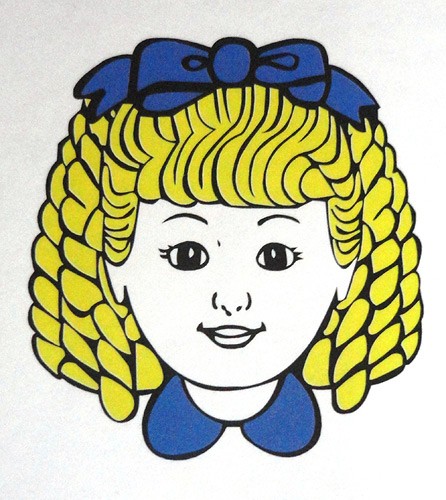 |
| GOLDILOCKS, the old and the new, 1986 and current brand visual identity |
In the mid 60s, anyone wishing to enjoy an honest-to-goodness slice of cake for a meatime dessert or a mid-afternoon treat had to wait for mother’s free time to bake one.

EARLY GOLDILOCKS MASCOTS, Source: Goldilocks website
In the Leelin clan, three young housewives’ favorite pastime was baing cakes and pastries. Encouraged by the mounting orders from relatives and friends, their hobby evolved into a small enterprise. On May 15, 1966, a modest store was opened by sisters Milagros Leelin Yee and Clarita Leelin Go, with sister-in-law Doris, in a small space in an unpretentious apartment row on Pasong Tamo, Makati.

1985 GOLDILOCKS 20TH ANNIVERSARY PRINT AD
A third sister, Maria Flor, suggested that they name the enterprise "GOLDILOCKS”, after the fairy tale character. The intention was to make it easier for children and their mothers to remember the bakeshop's name, and also because it suggested luck and prosperity. The store was manned by a staff of 5, who took turns in shaping dough, filling in shopping bags and loading goodies for deliveries. In time, the name GOLDILOCKS was associated with “home-baked” confections and pastries , and when one wanted cakes, one thought of GOLDILOCKS.

1990s GOLDILOCKS BRAND CHARACTER
A GOLDILOCKS image was created in the mid-1980s with the help of the store’s ad agency—a standing figure of a girl with golden locks. In the mid-1990s, an industrial design agency streamlined the character, using just GOLDILOCKS' face and a unique font specially created for the GOLDILOCKS brand name.
The character was altogether dropped, and now, the GOLDILOCKS shop is represented by its monogram G in script, encased in a circle of turquoise shade.
SOURCES:
Adapted from Goldilocks 20th Year advertorial, “Your Good
Taste Made It Happen”, Sunday Times Magazine, 11 May 1986. p. 23.
Goldilocks photo: https://www.goldilocks.com.ph/our-story
Alex R. Castro, “10 Memorable Classic Characters From Local
Ads”, spot.ph























